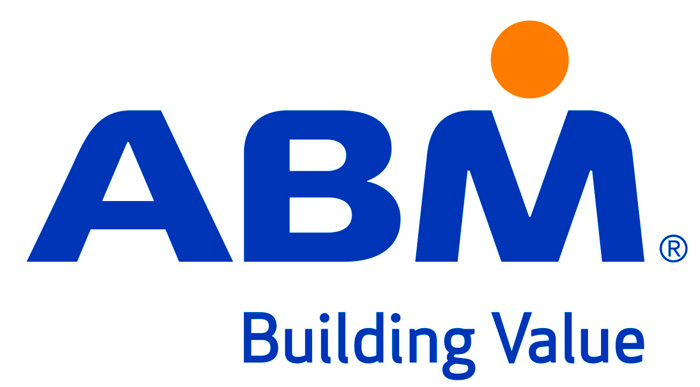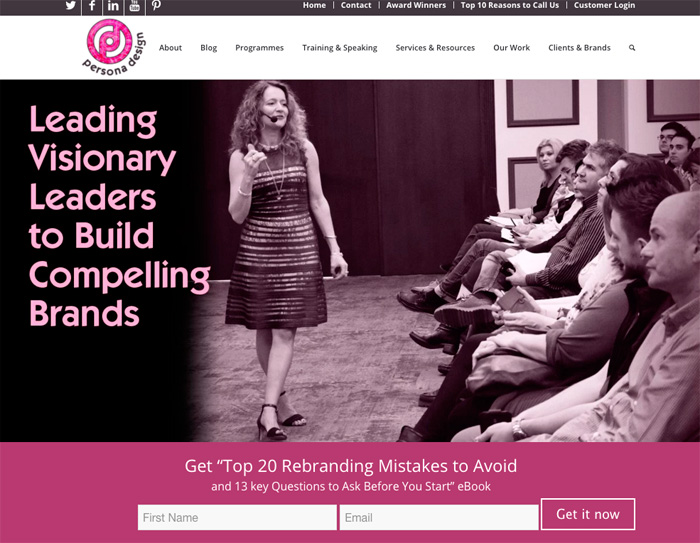Rebranding: 15 Do’s and Don’ts for Brand Success
Since 1903, the Pepsi-Cola (and later Pepsi) logo has seen many changes and facelifts in the form of rebranding and revitalisations. Through the last 100-plus years, the logo has evolved from what we might consider today an old-fashioned typeface through many fresh new looks.

Image via Pepsi
But while it’s interesting to follow the evolution of a well-known brand, let’s be perfectly clear. Changing a logo, altering the colour or even tweaking the name is not a rebranding strategy. Rebranding is much more than a design facelift. It may result in the design of new logos and the creation of new brand names, but it all starts as with your brand strategy first long before anything else relating to design is considered.
It’s essential to note that branding is NOT marketing or design but the bedrock foundation underpinning your whole business so getting your rebranding strategy right is critical to your success. In short, your rebranding strategy provides the direction for all your marketing, communications, positioning, language, messaging along with design.
And there are many strategic reasons to rebrand. A company may need to rebrand to:
- Re-establish its market prominence
- Acknowledge and reflect a major acquisition
- Announce a new technology or invention that changes its mission and vision
- Revitalize the voice and significance of the brand
- Refocus the company around major customer and/or industry trends
- Reflect a strategic move to reach new markets
- Give new life to flagging sales
- Move beyond a negative event
Whatever the reason, the key is to use your rebranding to help move your business and its products and services forward. Regardless of whether you’re rebranding a bank, hotel, power company or canned fruit, having the right strategy makes all the difference.
Want to discover more about rebranding to build your standout, №1 powerhouse, premium priced brand working with us so you can increase your profits and leave your competitors way behind?
- Schedule an appointment — we can meet in person or online
- Allow us to create a customised plan for you
- Let’s implement the plan together
- Contact us [email protected] or ring +353 1 8322724 (GMT Dublin/London time 9:00 – 17:30 weekdays)
One study of the hotel and hospitality industry in the United States attributes a 6.31% increase in occupancy to rebranding—and 60% of that to the power of the brand.[1] As researchers explain in their study, “Corporate Rebranding: An Integrative Review of Major Enablers and Barriers to the Rebranding Process”:
“Critical to successful corporate rebranding is the identification and application of six major enablers, including strong rebranding leadership and coordination among multiple functions and stakeholder groups.”[2]
To this end, we’ve compiled our list of 15 Do’s and Don’ts for Rebranding Success in order to help you navigate your next strategic rebranding and focus on critical leadership and coordination issues. We’ve been leading clients through all the various aspects of rebranding for more than twenty years so we want to ensure you engage in the process successfully by starting off on the right foot!
Also to help you achieve success, get our free download “Top 20 Rebranding Mistakes to Avoid.” here
We know that sometimes it’s a struggle to rebrand or revitalise your brand successfully yourselves so we’ve developed three different ways of working with us to help you rebrand successfully. So depending on your preferences:
- We can build your brand for you – find out more here or get in touch [email protected] or ring +353 1 8322724
- Empower you to build your brand – check out the Persona Brand Building Blueprint™ Mastermind here. This is a two-day intensive where you work on your brand with us codifying and mapping out your brand strategy for business growth. Alternatively, join our half-day Branding Accelerator Masterclass for a fast-injection of brand building essentials
- Want a DIY solution? Check out our ‘How to Audit Your Brand’ eprogramme here and How to Build a Brand eprogramme here
Top Rebranding Do’s and Don’ts
How important is your brand? The market research firm Millward Brown attributes more than 30% of the value of companies in the S&P 500 to the brand value.[3] Your brand is just as important, which is why you can’t cut corners during your rebranding.
1. DO challenge your reasons for rebranding
It’s not enough to “feel” that it’s time for a change. Whether you’re rebranding a product or the company, question the strategic advantage of your decision. What do you gain? Are there any other options or avenues open to you short of a complete rebrand? In other words, go into this with your wide eyes open and a clear sense of where you’re going and why.
When the Langham Hospitality Group decided to refocus its business to better serve a large middle-income population, it rebranded the business to focus on its new mission of service. In this discussion on Bloomberg, CEO Robert Warman clearly articulates their thinking:
2. DON’T focus your rebranding on simply redesigning your logos, changing colours and replacing fonts
There’s nothing wrong with giving your brand a facelift; just don’t confuse a design initiative with the objective of a true rebranding which is driven by a specific strategic intent. When you rebrand, you are communicating a fundamental change in the business.
In this video, UPS helps its SME / SMB customers understand the power of branding (and by extension rebranding). This is a strategic endeavor that extends to absolutely every aspect of your business…right down to a greeting and a handshake.
3. DO assess exactly what’s not working or what needs to change (and why) as well as what needs to remain the same by giving your brand a health check before rebranding
Just as you need to challenge your decision to rebrand (#1) you also need to dig deep into all aspects of your business to ensure you change/expand/update those things that need to be rebranded. And at the same time retain what’s still working and still reflects how you are doing business going forward.
If you need direction and support in giving your brand a health check feel free to get in touch [email protected] or give us a ring T: +353 1 8322724 (GMT hours). Alternatively, you can also give your brand a health check yourself to identify its strengths, weakness and areas for potential innovation and growth using our Auditing Analysis Accelerator™ programme. This is a step-by-step DIY walkthrough, complete with downloads, questionnaires and checklists, to help you audit your brand yourself. You can watch a section of the programme here.

Want to give your brand a health check. Use the Auditing Analysis Accelerator™ programme – get it here
Consider Malaysia Airlines. After the Flight 370 tragedy, you might think that their decision to rebrand would mean starting completely fresh—even changing the name. But as the new CEO Christoph Mueller tells CNN, there is so much loyalty to the brand that they feel that they need to keep the name.
4. DON’T use your competition as the focus of your rebranding
While it is essential that you know what your competition is doing and how you fit in among your key competitors, don’t let the competition drive your decisions. Do what is best for your business, what makes the most sense in terms of your products and services and what attracts your customers.
When you let the competition drive your business decisions, you’ll almost always end up playing a game of catch up or “me too.” To stand out, you need to be true to your vision, your culture, your philosophy and how it intersects with the values of your customers.
5. DO your homework on industry trends and your market before rebranding
While you need to know who your competition is and what they’re doing, your best insight is going to come from having a thorough up-to-date understanding of both industry trends and the wants and needs of the customers you are trying to reach.
This is doubly important if part of your rebranding strategy is to try to expand into a new industry or new marketplace. And your research should include talking with prospective customers in this new market. The more you know going into your rebranding effort, the better your position and your potential to succeed.
6. DON’T rebrand because it’s supposedly ‘cool’
Familiarity can breed boredom. And who’s more familiar with a brand than the people who deal with it every working day. Don’t fall into the trap of thinking that you need something fresh and new just because it’s been around for a while.
But here’s the good news: If you understand the strategic importance of your brand and how it stands for who, what and why you’re in business, you’ll be less apt to fall into this trap. Maybe you need to refresh your logo, change your packaging, advertising, update your brand collateral or bring something new to your social media approach. But these are more tactical changes—window dressing—and not a dramatic change in strategic direction.
7. DO involve all your employees in the rebranding discussion
When a business decision requires rebranding, it needs to be felt and carried out at all levels of the company. Everyone from the CEO to the newest hire has to be on board. But rather than hand down a new brand directive from the top, start your rebranding at the grassroots. Involve everyone in the process. Invite their input. Ensure that where management thinks it needs to take the brand is something that everyone can deliver on. Your employees will be more willing to do their part when they are empowered to participate in the process.
8. DON’T forget to interview your customers and get their perspective before rebranding
Just as you want to talk with prospective customers in any new markets you plan to reach, you don’t want to leave your current customers behind. Remember, it’s easier to retain customers than acquire new ones. So make sure that customers understand your decision to rebrand and feel comfortable that you’ll still be able to meet their wants and needs. And invite them to share their thoughts. They may have a perspective that you need to incorporate into your rebranding strategy.
9. DO work with experienced brand experts who can help guide you through the rebranding process successfully and ask the right questions along the way
There are so many moving parts to developing and executing a rebranding strategy that it pays to work with experts—people who live and breath the branding process. Not only can a branding consultant make your rebranding process easier, they can also help ensure that you don’t overlook some critical steps.
10. DON’T wait until after you change direction with your rebranding to think about the rollout
While it’s easy to get caught up in the details of the rebranding strategy itself, there are a lot of tactical steps to launching your rebranding—e.g., the event, a strategic location, how to employ social media. These are not afterthoughts. It’s not as simple as one day posting a new logo on your website, announcing an acquisition or creating the content and brand collateral needed to reach a new market.
You need your rebranding to launch without a hitch. So be sure to assign part of your marketing team to create the tactical plan that will help you relaunch your brand successfully.
11. DO manage your customers’ expectations with your rebranding
In addition to getting your existing customers’ perspectives on your brand and where you’re going in the future, you don’t want your rebrand to blindside your loyal customers.
If you have field reps, plan for them to speak with customers. Let them give their customers a head’s up as well as reassure them that their needs will be fully met going forward. If you rely on inside sales and don’t have a sales force, you might have a top executive call key customers or send out personal letters. You don’t want to lose the trust of the customers that have helped you build your business.
12. DON’T try to keep the old brand alive in any form with your rebranding
During your relaunch, you’ll announce that X is now Y. And once you’ve made the announcement, don’t try to make a slow or gradual transition. Dump the old logo, the old name, the old brand collateral…everything that represented who you WERE. Trying to phase out or use up old brochures or letterhead is confusing and actually defeats the purpose of the rebranding. The transformation must happen across all your brand touch-points consistently and congruently at the same time—not months apart! Move on with confidence, strength and clarity.
13. DO communicate your new strategy and tie it directly to the rebranding so everyone understands what you’re doing and why
Few things are more important than communication. The more people understand what you’re doing, why you’re doing it, how it will impact them and the timeline for everything you’re doing, the easier it is for them to support you and help ensure a smooth rebranding process.
After TriNet, an outsourcer of HR services acquired a large company, it quickly went through a rebranding. This brief video is a clip from a longer presentation showing how TriNet keeps its customer-facing employees informed and completely in the loop.
14. DON’T forget to register any new trademarks as part of your rebranding
Whether you’re changing the name of the company or adding new branded products, sub-brands or services, you’ll naturally check to make sure the names are available. Don’t forget to register and protect these names for your exclusive use in every country or market where you plan to do business. Without registering your brand names (and the relevant brand assets like your logo artwork) you may find yourself in a losing battle later to protect the brands you’ve worked hard to develop.
15. DO discuss the ownership of any copyrights on creative outputs as part of your rebranding
Finally, there’s the matter of creative ownership. When you hire a freelance artist or graphic designer or design agency you want to make sure that you have exclusive use of the intellectual property. While the law differs slightly from country to country, you’ll probably want to establish a “work for hire” arrangement. Talk with your attorney and your brand consultant on how best to proceed. Even if you don’t end up owning the creative outright, you can pay to lock up its exclusive use.
Rebranding Case Study #1: Putting Some New Kick in Old Spice
Although Old Spice has been creating personal grooming products for more than 70 years, the brand began to stagnate in the 1980s and didn’t improve even after Procter & Gamble bought the company. That changed, however, in 2010 with an extension to the product line and the funky rebranding in the guise of the Old Spice Guy. P&G didn’t simply reposition the product; it sold women on the idea of buying its new line of body washes for their men.
Old Spice is an often-told story of a great brand comeback through rebranding. Best of all, they didn’t make the mistake of losing the trust and following of loyal customers. If there’s one weakness in the Old Spice strategy, however, it may be that they’ve failed to stay one step ahead of other brands that have followed in their footsteps with equally off-beat videos.
Takeaway: With rebranding, you can bring new audiences to an old, established brand. But once you get the momentum going (or have the good fortune of going viral) you need to keep it going with marketing automation and strong data management techniques that allow you to interact with customers.
Rebranding Case Study #2: ABM Does More Than Windows!

Image via ABM
Just three years after the 1906 earthquake, San Francisco was rebuilt and booming—enough so that Morris Rosenberg started up his window-washing business. In 1913, Rosenberg renamed his one-man operation American Building Maintenance Company and expanded into comprehensive janitorial services. Today the 100,000 employees of ABM Industries provide janitorial and facilities management around the world.
But ABM had a problem. While the company’s capabilities had expanded dramatically, most prospective customers still thought of it as a successful custodial service. ABM needed to build awareness for its expanded capabilities, including security and property systems engineering. It used the 2010 acquisition of the Linc Group to gain that awareness through a strategic rebranding that;
- Reorganized and simplified the range of service offerings
- Focused on the overall value ABM delivers through its integrated facility solutions
- Included a whole new brand identity
Takeaway: Rebranding your company can help you get the attention you need when you have a big message to deliver. In the case of ABM Industries, they capped off the whole process—new logo, reorganization of services, a new tagline—by ringing the NYSE closing bell in October 2012. ABM sent a message throughout the industry that this company is still growing and looking to the future.
Are You Ready for Rebranding?
If you think your company will benefit from a rebranding, ask yourself:
- Do we have a good reason for rebranding? If so, you need to be able to articulate it clearly.
- What are the strategic implications for our business? Is there any potential downside? Will this move leave any of our stakeholders behind?
- Have you presented the task to the entire company—from CEO to newest hire?
- Have you looked at your brand through your customers’ eyes and talked with them about your decision?
- Have you considered how you will bring your business plan into alignment with your brand going forward?
- Do you have a thorough plan for rolling out and implementing your rebranding? Do your employees understand the plan, know how it impacts them and have confidence they can live up to the objectives?
We know that sometimes it’s a struggle to rebrand or revitalise your brand successfully yourselves so we’ve developed three different ways of working with us to help you rebrand successfully. So depending on your preferences:
- We can build your brand for you – find out more here or get in touch [email protected] or ring +353 1 8322724
- Empower you to build your brand – check out the Persona Brand Building Blueprint™ Mastermind here. This is a two-day intensive where you work on your brand with us codifying and mapping out your brand strategy for business growth. Alternatively, join our half-day Branding Accelerator Masterclass for a fast-injection of brand building essentials
- Want a DIY solution? Check out our ‘How to Audit Your Brand’ eprogramme here and How to Build a Brand eprogramme here
Want to discover more about rebranding to build your standout, №1 powerhouse, premium priced brand working with us so you can increase your profits and leave your competitors way behind?
- Schedule an appointment — we can meet in person or online
- Allow us to create a customised plan for you
- Let’s implement the plan together
- Contact us [email protected] or ring +353 1 8322724 (GMT Dublin/London time 9:00 – 17:30 weekdays)
Your Client Satisfaction Guarantee
- When you work with us we’ll create a customised brand building plan and strategy with clear investment for you tailored to your specific requirements and preferences
- You’ll know each step of your brand building journey before we start because we’ll discuss it, document it and agree on it with you before work commences
- You’ll have timelines, key milestones and deliverables to evaluate and approve for each stage and part of your brand building process
- Because we know the unexpected sometimes happens we can make adjustments along the way if you need it and if something extra is requested we’ll ensure you’re fully appraised about what that entails before committing
- As we achieve pre-agreed objectives you’ll be able to evaluate your brand building work and strategy in progress, coupled with the outcomes to ensure return on investment
Get in touch today because we’d love to get started helping you build your standout, powerhouse brand so you can increase your profits and leave your competitors way behind. Email us [email protected] or ring us +35318322724 (GMT 9:00-17:30) and ask about our VIP Brand Strategy Discovery.

Image via Zillon Designs
[1] http://journals.ama.org/doi/abs/10.1509/jmr.13.0221?code=amma-site
[2] http://onlinelibrary.wiley.com/doi/10.1111/ijmr.12020/abstract
[3] http://www.economist.com/news/business/21614150-brands-are-most-valuable-assets-many-companies-possess-no-one-agrees-how-much-they










-600px.jpg)


































